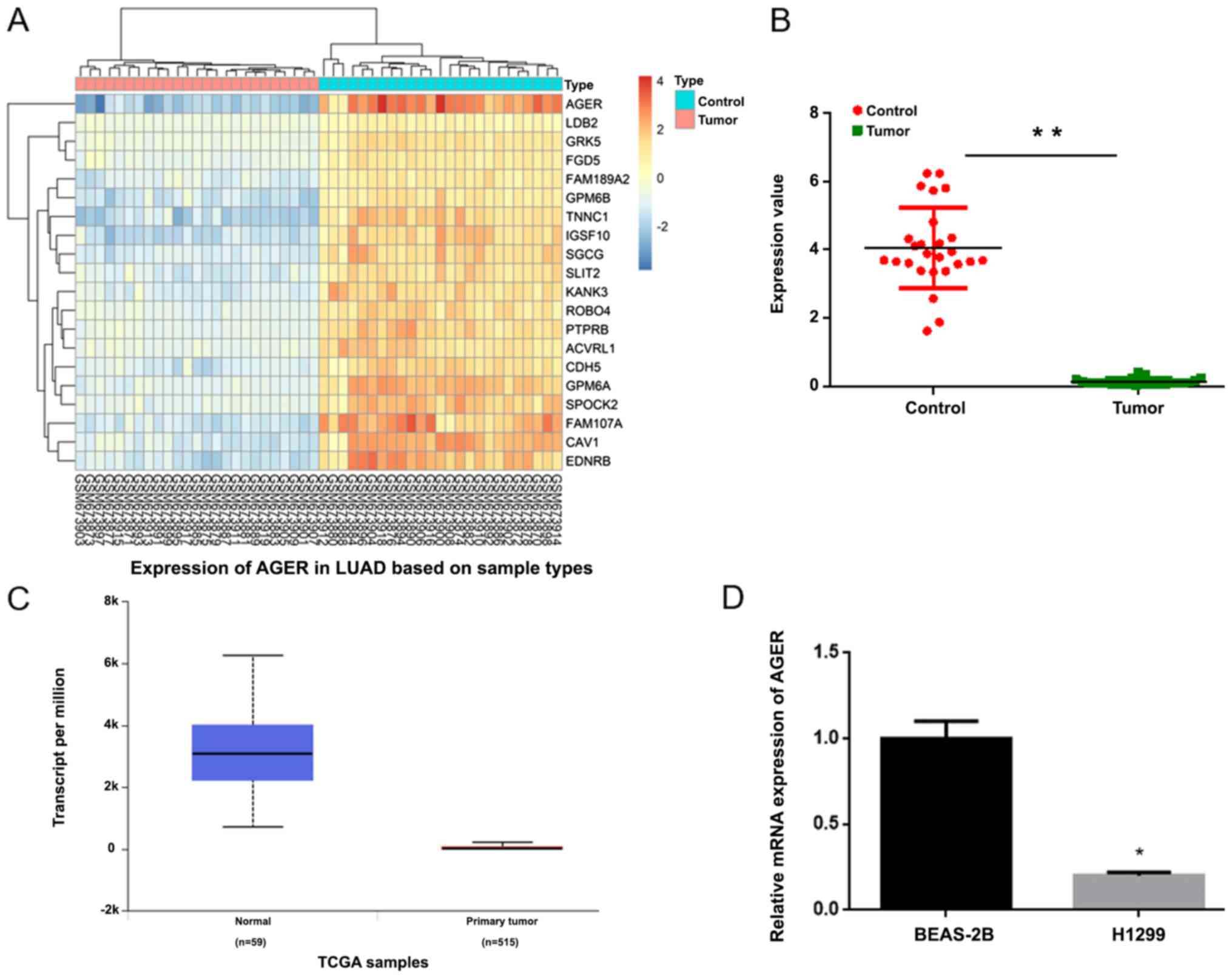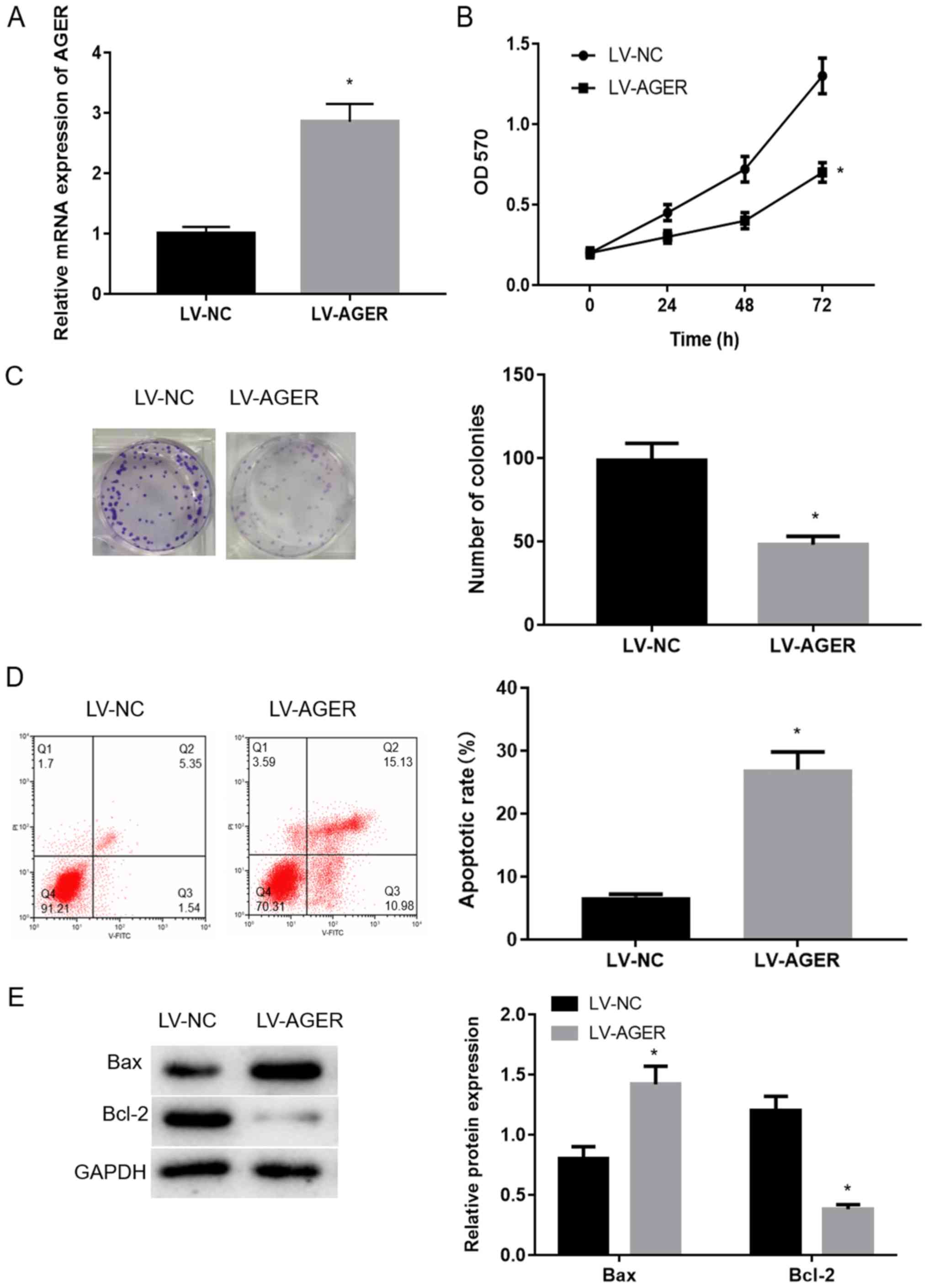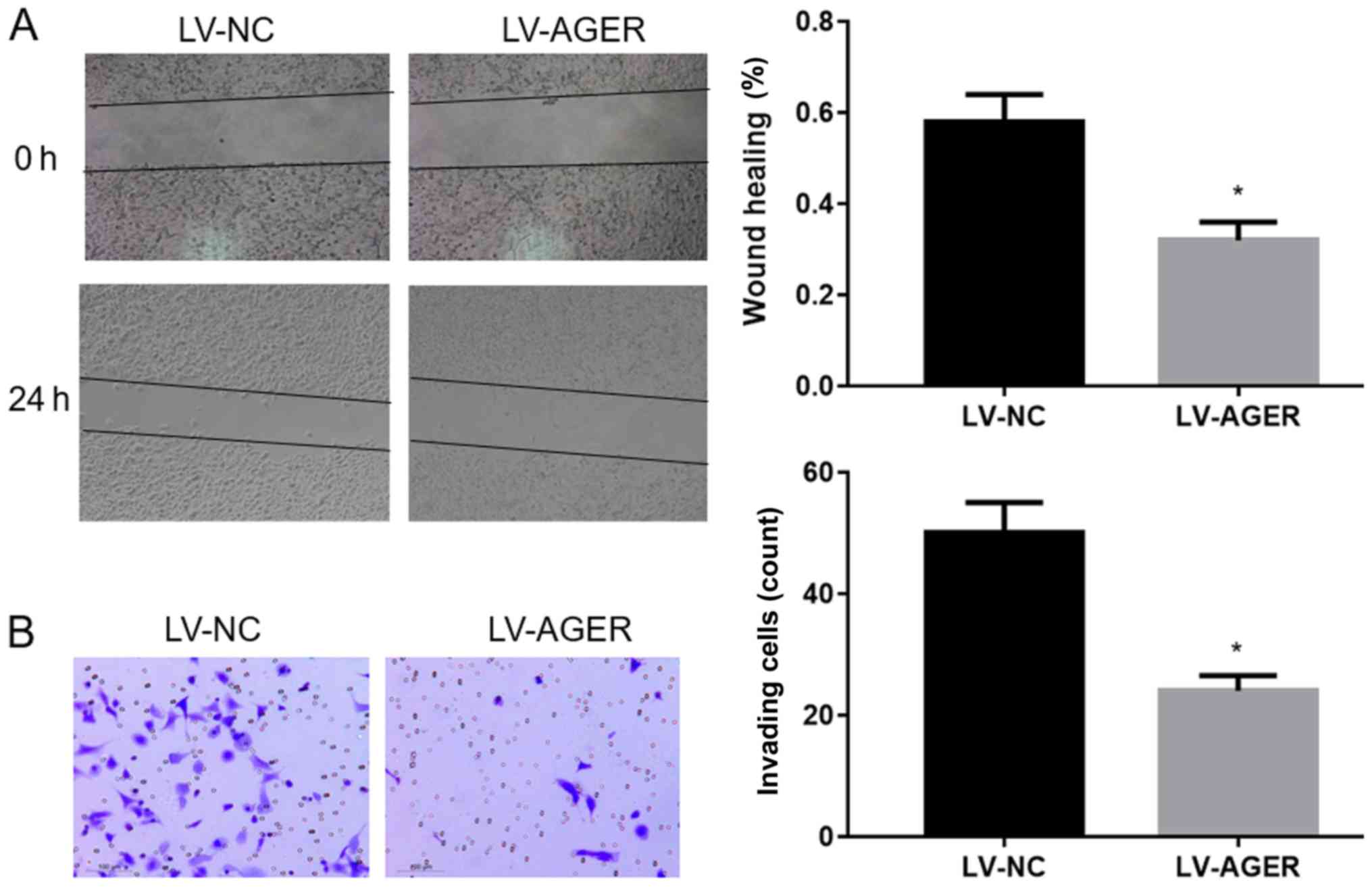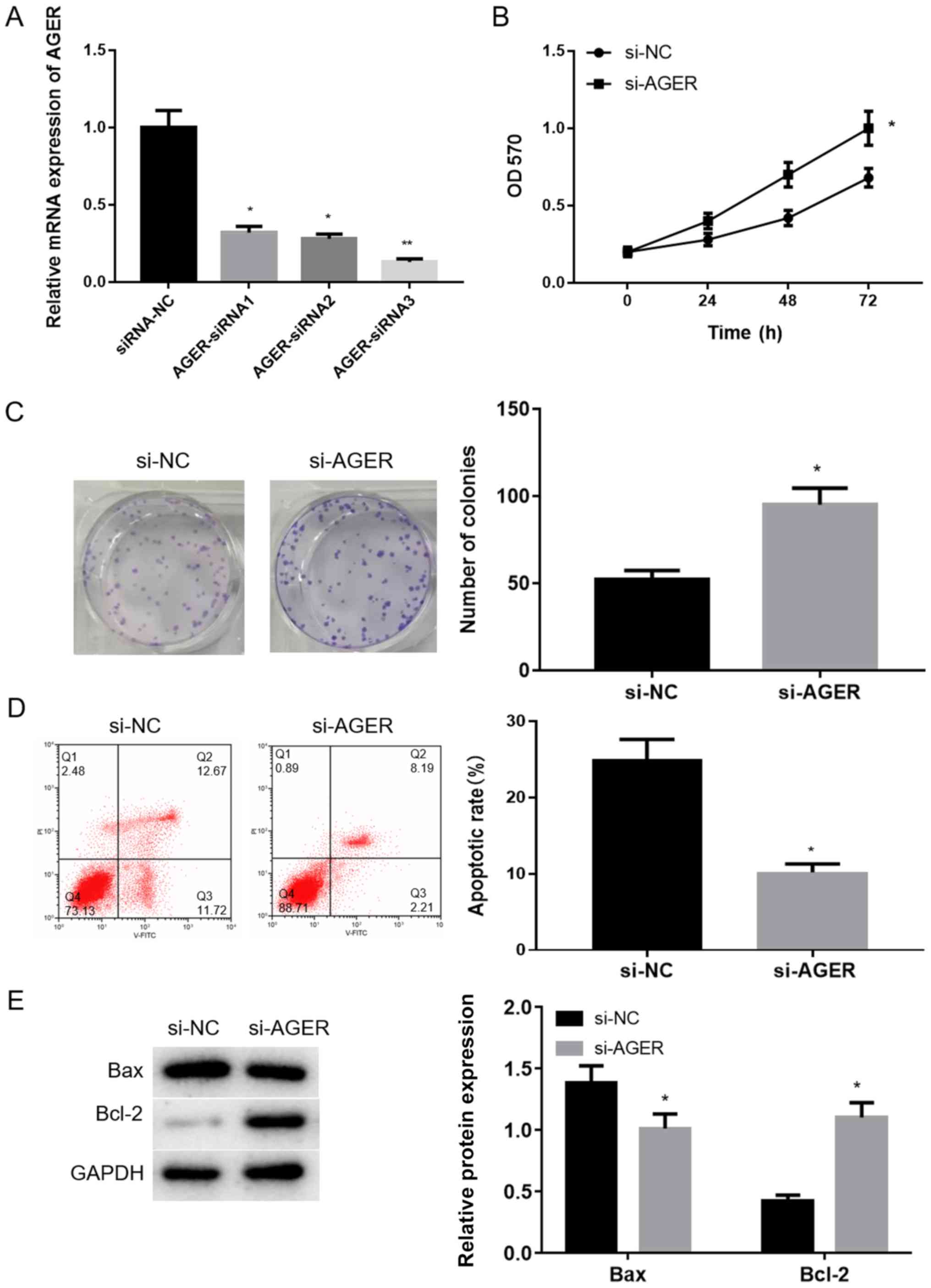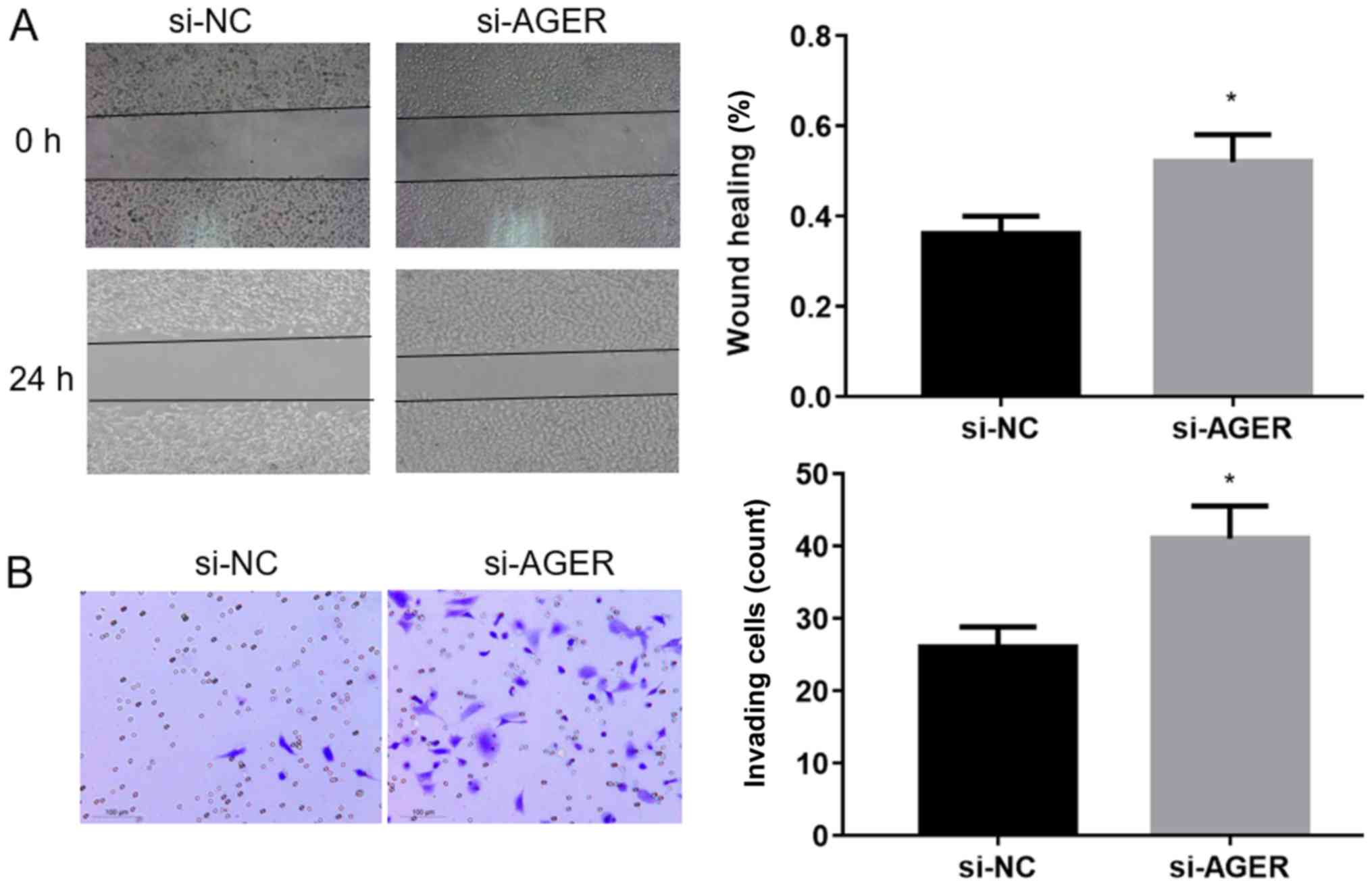|
1
|
Zhang F, Yang R, Zhang G, Cheng R, Bai Y,
Zhao H, Lu X, Li H, Chen S, Li J, et al: Anticancer function of
alpha-solanine in lung adenocarcinoma cells by inducing
microRNA-138 expression. Tumour Biol. 37:6437–6446. 2016.
View Article : Google Scholar : PubMed/NCBI
|
|
2
|
Sun B, Liu HF, Ding Y and Li Z: Evaluating
the diagnostic and prognostic value of serum miR-770 in non-small
cell lung cancer. Eur Rev Med Pharmacol Sci. 22:3061–3066.
2018.PubMed/NCBI
|
|
3
|
Shi H, Bi H, Sun X, Dong H, Jiang Y, Mu H,
Li W, Liu G, Gao R and Su J: Tubeimoside-1 inhibits the
proliferation and metastasis by promoting miR-126-5p expression in
non-small cell lung cancer cells. Oncol Lett. 16:3126–3134.
2018.PubMed/NCBI
|
|
4
|
Torre LA, Siegel RL and Jemal A: Lung
Cancer Statistics. Adv Exp Med Biol. 893:1–19. 2016. View Article : Google Scholar : PubMed/NCBI
|
|
5
|
Chu K, Gao G, Yang X, Ren S, Li Y, Wu H,
Huang Y and Zhou C: MiR-512-5p induces apoptosis and inhibits
glycolysis by targeting p21 in non-small cell lung cancer cells.
Int J Oncol. 48:577–586. 2016. View Article : Google Scholar : PubMed/NCBI
|
|
6
|
Wei J, Ma Z, Li Y, Zhao B, Wang D and Jin
Y and Jin Y: miR-143 inhibits cell proliferation by targeting
autophagy-related 2B in non-small cell lung cancer H1299 cells. Mol
Med Rep. 11:571–576. 2015. View Article : Google Scholar : PubMed/NCBI
|
|
7
|
Zhou YL, Xu YJ and Qiao CW: MiR-34c-3p
suppresses the proliferation and invasion of non-small cell lung
cancer (NSCLC) by inhibiting PAC1/MAPK pathway. Int J Clin Exp
Pathol. 8:6312–6322. 2015.PubMed/NCBI
|
|
8
|
Li X, Li M, Chen D, Shi G and Zhao H:
PAQR3 inhibits proliferation via suppressing PI3K/AKT signaling
pathway in non-small cell lung cancer. Arch Med Sci. 14:1289–1297.
2018. View Article : Google Scholar : PubMed/NCBI
|
|
9
|
Li Q, Xia S, Yin Y, Guo Y, Chen F and Jin
P: miR-5591-5p regulates the effect of ADSCs in repairing diabetic
wound via targeting AGEs/AGER/JNK signaling axis. Cell Death Dis.
9:5662018. View Article : Google Scholar : PubMed/NCBI
|
|
10
|
Xu Y, Toure F, Qu W, Lin L, Song F, Shen
X, Rosario R, Garcia J, Schmidt AM and Yan SF: Advanced glycation
end product (AGE)-receptor for AGE (RAGE) signaling and
up-regulation of Egr-1 in hypoxic macrophages. J Biol Chem.
285:23233–23240. 2010. View Article : Google Scholar : PubMed/NCBI
|
|
11
|
Chong SF, Lee JH, Zelikin AN and Caruso F:
Tuning the permeability of polymer hydrogel capsules: an
investigation of cross-linking density, membrane thickness, and
cross-linkers. Langmuir. 27:1724–1730. 2011. View Article : Google Scholar : PubMed/NCBI
|
|
12
|
Bongarzone S, Savickas V, Luzi F and Gee
AD: Targeting the Receptor for Advanced Glycation Endproducts
(RAGE): A Medicinal Chemistry Perspective. J Med Chem.
60:7213–7232. 2017. View Article : Google Scholar : PubMed/NCBI
|
|
13
|
Jing RR, Cui M, Sun BL, Yu J and Wang HM:
Tissue-specific expression profiling of receptor for advanced
glycation end products and its soluble forms in esophageal and lung
cancer. Genet Test Mol Biomarkers. 14:355–361. 2010. View Article : Google Scholar : PubMed/NCBI
|
|
14
|
Nankali M, Karimi J, Goodarzi MT, Saidijam
M, Khodadadi I, Razavi AN and Rahimi F: Increased Expression of the
Receptor for Advanced Glycation End-Products (RAGE) Is Associated
with Advanced Breast Cancer Stage. Oncol Res Treat. 39:622–628.
2016. View Article : Google Scholar : PubMed/NCBI
|
|
15
|
Wang D, Li T, Ye G, Shen Z, Hu Y, Mou T,
Yu J, Li S, Liu H and Li G: Overexpression of the receptor for
advanced glycation endproducts (RAGE) is associated with poor
prognosis in gastric cancer. PLoS One. 10:e01226972015. View Article : Google Scholar : PubMed/NCBI
|
|
16
|
Zheng L, Li D, Zhou YM, Yang H, Cheng D
and Ma XX: Effects of receptor for advanced glycation endproducts
on microvessel formation in endometrial cancer. BMC Cancer.
16:932016. View Article : Google Scholar : PubMed/NCBI
|
|
17
|
Zhang W, Fan J, Chen Q, Lei C, Qiao B and
Liu Q: SPP1 and AGER as potential prognostic biomarkers for lung
adenocarcinoma. Oncol Lett. 15:7028–7036. 2018.PubMed/NCBI
|
|
18
|
Yang Q, Tang Y, Tang C, Cong H, Wang X,
Shen X and Ju S: Diminished LINC00173 expression induced miR-182-5p
accumulation promotes cell proliferation, migration and apoptosis
inhibition via AGER/NF-κB pathway in non-small-cell lung cancer. Am
J Transl Res. 11:4248–4262. 2019.PubMed/NCBI
|
|
19
|
Fu J, Khaybullin R, Liang X, Morin M, Xia
A, Yeh A and Qi X: Discovery of gene regulation pattern in lung
cancer by gene expression profiling using human tissues. Genom
Data. 3:112–115. 2015. View Article : Google Scholar : PubMed/NCBI
|
|
20
|
Pan Z, Liu L, Nie W, Miggin S, Qiu F, Cao
Y, Chen J, Yang B, Zhou Y, Lu J and Yang L: Long non-coding RNA
AGER-1 functionally upregulates the innate immunity gene AGER and
approximates its anti-tumor effect in lung cancer. Mol Carcinog.
57:305–318. 2018. View
Article : Google Scholar : PubMed/NCBI
|
|
21
|
Serveaux-Dancer M, Jabaudon M, Creveaux I,
Belville C, Blondonnet R, Gross C, Constantin JM, Blanchon L and
Sapin V: Pathological implications of receptor for advanced
glycation end-product (AGER) gene polymorphism. Dis Markers.
2019:20673532019. View Article : Google Scholar : PubMed/NCBI
|
|
22
|
Liu W, Ouyang S, Zhou Z, Wang M, Wang T,
Qi Y, Zhao C, Chen K and Dai L: Identification of genes associated
with cancer progression and prognosis in lung adenocarcinoma:
Analyses based on microarray from Oncomine and The Cancer Genome
Atlas databases. Mol Genet Genomic Med. 7:e005282019.PubMed/NCBI
|
|
23
|
Beucher J, Boelle PY, Busson PF,
Muselet-Charlier C, Clement A and Corvol H; French C F Modifier
Gene Study Investigators, : AGER-429T/C is associated with an
increased lung disease severity in cystic fibrosis. PLoS One.
7:e419132012. View Article : Google Scholar : PubMed/NCBI
|
|
24
|
Caraher EJ, Kwon S, Haider SH, Crowley G,
Lee A, Ebrahim M, Zhang L, Chen LC, Gordon T, Liu M, et al:
Receptor for advanced glycation end-products and World Trade Center
particulate induced lung function loss: A case-cohort study and
murine model of acute particulate exposure. PLoS One.
12:e01843312017. View Article : Google Scholar : PubMed/NCBI
|
|
25
|
Machahua C, Montes-Worboys A,
Planas-Cerezales L, Buendia-Flores R, Molina-Molina M and
Vicens-Zygmunt V: Serum AGE/RAGEs as potential biomarker in
idiopathic pulmonary fibrosis. Respir Res. 19:2152018. View Article : Google Scholar : PubMed/NCBI
|
|
26
|
de Bittencourt Pasquali MA, Gelain DP,
Zeidan-Chulia F, Pires AS, Gasparotto J, Terra SR and Moreira JC:
Vitamin A (retinol) downregulates the receptor for advanced
glycation endproducts (RAGE) by oxidant-dependent activation of p38
MAPK and NF-kB in human lung cancer A549 cells. Cell Signal.
25:939–954. 2013. View Article : Google Scholar : PubMed/NCBI
|
|
27
|
Wei TY, Juan CC, Hisa JY, Su LJ, Lee YC,
Chou HY, Chen JM, Wu YC, Chiu SC, Hsu CP, et al: Protein arginine
methyltransferase 5 is a potential oncoprotein that upregulates G1
cyclins/cyclin-dependent kinases and the phosphoinositide
3-kinase/AKT signaling cascade. Cancer Sci. 103:1640–1650. 2012.
View Article : Google Scholar : PubMed/NCBI
|
|
28
|
Livak KJ and Schmittgen TD: Analysis of
relative gene expression data using real-time quantitative PCR and
the 2(-Delta Delta C(T)) method. Methods. 25:402–408. 2001.
View Article : Google Scholar : PubMed/NCBI
|
|
29
|
Campbell KJ and Tait SWG: Targeting BCL-2
regulated apoptosis in cancer. Open Biol. 8(pii): 1800022018.
View Article : Google Scholar : PubMed/NCBI
|
|
30
|
Hassan M, Watari H, AbuAlmaaty A, Ohba Y
and Sakuragi N: Apoptosis and molecular targeting therapy in
cancer. Biomed Res Int. 2014:150845. 2014. View Article : Google Scholar
|
|
31
|
Yu DH, Huang JY, Liu XP, Ruan XL, Chen C,
Hu WD and Li S: Effects of hub genes on the clinicopathological and
prognostic features of lung adenocarcinoma. Oncol Lett.
19:1203–1214. 2020.PubMed/NCBI
|















